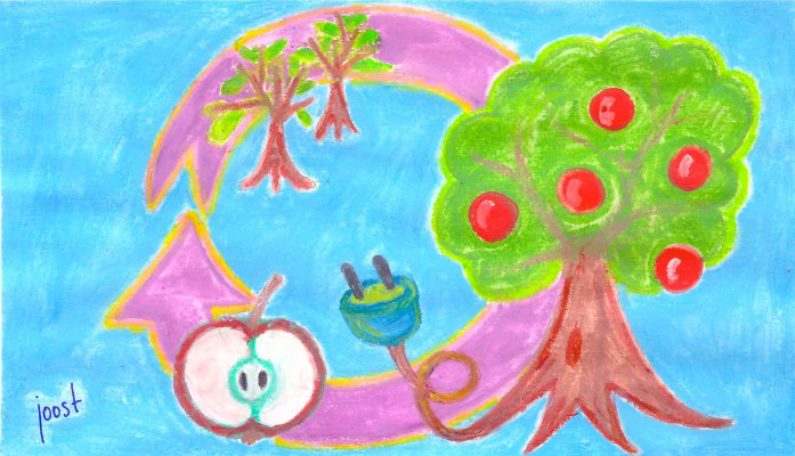Want to Have a Sustainable Business? Pull the Plug!
= a refreshing perspective on organisational sustainability, what questions to ask in your company and how to shape your organisation into a sustainable one =
How does nature do it?
Webster’s definition of ‘sustainable’ is: able to last or continue for a long time.
Let’s explore this a bit further. Would you call an ecological system like a forest sustainable? I’d say yes (as long as humans don’t interfere too much). However, if I take a close look, I see an interesting phenomenon. One of the main components of a forest – a tree – grow from a seedling into a young tree into a mature trees. It gives fruit every season, at some point it dies or gets hit by lightning, and then new seedlings are growing in its place. This cyclical design – also explained by Mufasa to Simba as ‘The Circle of Life’ – makes the forest sustainable. And one of the viable elements that will allow the forest to exist in the future, are the seeds of the trees.
Now if it works for nature, why would it be different for organisations?
If the forest is the market place and your company represented a tree, what are the seeds? In other words what element of your organisation is viable for the future?
Your brands? Your products or services? The consumer needs you fulfil? Your people? Your values? The way you’re organised? The community in which you operate? The cause or the why of your organisation?
For your company to be sustainable you want to think about its viable elements. And design and reinvent your organisation consistently around these elements. Even if this means you have to radically discontinue (like dying) certain aspects every now and then.
“A new type of thinking is essential if mankind is to survive and move toward higher levels” – Albert Einstein
Pulling the plug
When my wife and I start our Management Consulting company in 2002, we have a dream start. Within three years we work with clients such as Unilever, P&G, Vodafone, Sara Lee, Heineken, KPN, and Nestlé and travel to Russia, South Africa, USA, South America and all over Europe. We have 11 people working in our team, and we even hit an annual turnover of $1m in year four.
And then we decide to act on a life long dream: traveling for a year through the USA in a motorhome with our two little boys.
Half way during our travels I fly back to The Netherlands to talk with our team. Things are not going as planned. It just doesn’t work, us traveling and the team staying behind. So after an intense day where we explore all causes for the failure, I feel a decision submerging. And when everybody thinks I am going to announce my comeback, I state: “OK, I’ll pull the plug.”
The freedom that erupts from these words results in laughter, tears, and hugs between all the team members. People start to make plans for the future, and new training and consulting firms are created. Working together in smaller groups, or continuing individually. And after some years also these entities fall apart to blend into new organisations again.
Today, the sum of all the clients served, and the cumulative income generated by the original team is by far exceeding what we did back 10 years ago. So in this case, the viable elements of the Actimpact organisation are the ability to inspire people and constantly create new concepts, combined with the possibility to let go of structures that don’t work anymore. And then move on.
What is viable in your organisation?
As a leadership team you want to facilitate this exploration with your people. What is our company in essence? What is our cause, why dow we exist anyway, why do we wake up in the morning and why would anyone care?
Once you’re clear about this question, have a look at how congruent you have designed your organisation around these viable elements. When people are for instance your greatest assets (as stated by some large companies), have you really created an environment where people can blossom, grow, develop, feel safe, etcetera?
I promise a powerful exercise with some interesting new insights when you are truly open to the answers to these questions. And I’m interested to read your answers already in the comments below!

